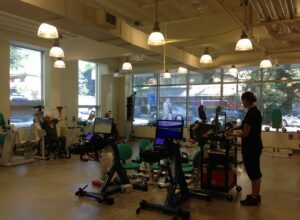 First published on MedCityNews.com. The National Institutes of Health has awarded $2.4 million over the next five years to three projects involving robots that would enhance mobility for the visually and physically impaired and i
First published on MedCityNews.com. The National Institutes of Health has awarded $2.4 million over the next five years to three projects involving robots that would enhance mobility for the visually and physically impaired and i
 First published on MedCityNews.com. The National Institutes of Health has awarded $2.4 million over the next five years to three projects involving robots that would enhance mobility for the visually and physically impaired and improve treatment of atrial fibrillation.
First published on MedCityNews.com. The National Institutes of Health has awarded $2.4 million over the next five years to three projects involving robots that would enhance mobility for the visually and physically impaired and improve treatment of atrial fibrillation.
This is the second year NIH has participated in President Obama’s National Robotics Initiative, a joint effort by a group of federal agencies to support development of robots that work with or beside humans. NIH funds projects that improve human capabilities or enhance medical treatments.
Here are the three projects NIH funded this time around:
- A co-robotic navigation device for the blind: Cang Ye at University of Arkansas is taking the white cane high-tech by incorporating 3D imaging sensor technology. The idea is that the cane could detect and relay to the user critical information about the environment, like when there’s a potential obstacle in the way.
- MRI-guided co-robotic catheter: During traditional catheter ablation for the treatment of atrial fibrillation, one of the most common arrhythmias, a catheter with an electrode on its tip is threaded through a vein in a patient’s groin up to the heart. Doctors destroy tissue at certain points on the heart in order to prevent the occurrence of irregular heart activity. However, the constant movement of the heart and blood can make that process difficult. Researchers at Case Western Reserve University are working on a catheter that uses robotic planning strategies to compensate for those movements to increase accuracy of procedures in conjunction with MRI.
- Platform for exploration of robotic ankle exoskeleton control: As wearable robotic technology continues to advance, researchers at North Carolina State and Carnegie Mellon are developing a way to compare different devices to assist people recovering from stroke. Their project proposes to create a platform that would allow investigators to test various robotic control methods and compare how they affect measurable physiological outcomes.
[Image credit: Steven Collins, Carnegie Mellon University via NIH]






